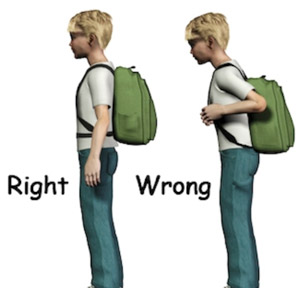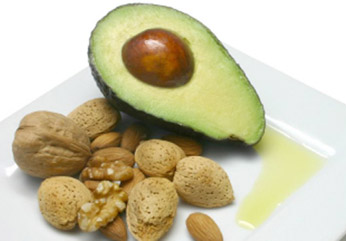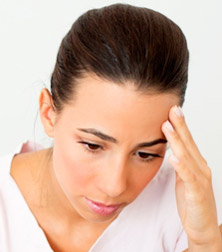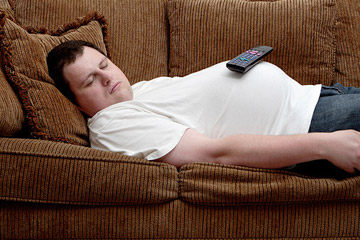|

Heavy school bags, main cause for spinal problems
By Carol Aloysius
Children with drooping shoulders, slouching backs and backache are
not uncommon these days. Physiotherapists blame it on the heavy school
backpacks they carry for most of the day. The problem lies in the heavy
backpacks children carry these days. With the ever-expanding syllabi,
the number of books is increasing and so is the load on their spines. To
make matters worse, children tend to carry their bags on one shoulder,
due to which the load is distributed unevenly.
A leading Chartered Physiotherapist, Dr GOPI KITNASAMY explains the
effects of carrying such extra weight on their backs while stressing
that heavy school bags are the main cause for spinal problems in
children. Following are excerpts from his interview with the Sunday
Observer.
Q. Thousands of
schoolchildren will soon be walking to school carrying heavy back packs
spilling over with text books, exercise books, water bottles and other
paraphernalia they require during the long period when they will be in
school. Even preschool children are forced to carry heavy school bags
these days. What effect will this extra strain on their back cause on
the growing bodies of these children?
 A. When undue
strain falls on the back, it can lead to poor chest expansion, decreased
lung capacity and poor stamina. A. When undue
strain falls on the back, it can lead to poor chest expansion, decreased
lung capacity and poor stamina.
Q. As a
physiotherapist could you tell us if there is a recommended weight for a
back pack which children should carry?
A. As
physiotherapists, we suggest that a backpack should never weigh more
than 10 percent of the child's body weight.
Q. Why?
A. The heavy
load causes them to lean forward to battle the pain in their shoulders.
This in turn leads to postural problems.
Q. Such as?
A. The wrong
backpack can lead to several problems. It can cause bad posture, tired
muscles, spinal problems, Scoliosis (“S”curvature of spine) and, if
unchecked, severe ailments like a compressed spinal nerve.
The weight of larger backpacks can affect a growing child's posture
and spinal health.
Other joints besides the child's spine can be affected because a
heavy weight can throw the neck, shoulders, and pelvis off balance.
Q. Does age count when
a child carries a bag too heavy for his size?
A. Children hit
their growth spurts between the ages of 12 and 14. During this period, a
heavy backpack can cause changes in the shape of bones, which can cause
permanent damage, as the whole skeleton is connected.
Q. What are the most
common risk factors associated with school bags?
A. Any
schoolbag that weighs more than 10 percent of the child’s weight is a
high risk factor with adverse effects on a child's spine and back.
Q. What about the way
children carry their bags? It's quite common to see children carrying
back packs on one shoulder or holding the bag with the straps. Is this
good for their spine?
A. No. Holding
the bag in one hand by its straps, or carrying the bag over one shoulder
can affect his posture permanently.
Q. What about the way
a bag is packed?
A. An
incorrectly packed backpack or an incorrectly fitted backpack can also
harm the child's health.
Q. What advice can you
offer to parents regarding how to purchase a proper school bag that is
suitable for their child?
A. My advice is
that they should always be aware of their child's spinal health when
purchasing a school bag.
Purchase backpacks with wide, padded straps and a pelvic strap. This
will help distribute the weight to the hips and take weight off the
back;
Encourage children to wear their backpacks over both shoulders. Even
though it's considered “cool” to carry a backpack over just one
shoulder, it creates uneven muscle development in children’s backs and
shoulders;
Q. What if there are
too many books to put into the bag? Should they buy a larger bag?
A. If there are
many books that need to be transported, urge your children to carry some
in their arms to take some of the weight from their backpacks;
Consider purchasing a backpack that is on wheels. This new trend has
become increasingly affordable and takes the weight off children’s
shoulders; Be a stickler about good posture! Backpacks may encourage
students to hunch forward, but if they are carried and fitted correctly
with the appropriate amount of weight, children should be able to stand
straight comfortably.
Q. How should a back
pack be packed correctly?
A. Pack the
heaviest items so they are closest to the child’s back. If the heaviest
items are packed further away, this throws out the child’s centre of
gravity and causes unnecessary back strain.
Make sure that items can’t move around during transit, as this could
upset your child’s centre of gravity. Use the backpack’s compartments.
Q. How will a parents
know when his child has developed spinal problems as a result of
carrying overweight school bags?
A. If your
children complain of back pain, get them checked out immediately.
Q. Can spinal defects
in children be corrected without surgery?
A. As I said,
free body movement while playing helps children’s bodies return to
normal posture.
Q. Have you any
suggestions regarding how a back pack should be lifted without straining
the back?
A. Adjust the
shoulder straps so that the bottom of the backpack is just above the
child’s waist - don’t allow them to wear the backpack slung low over
their buttocks.
• When fitted correctly, the backpack should contour snugly to the
child’s back, rather than hang off their shoulders.
• Your child should lift the backpack with a straight back, using
their thigh muscles.
The backpack should be lifted with both hands and held close to the
body. Slip an arm through one shoulder strap, and then the other.
• If your child has to lean over, their backpack is too heavy,
incorrectly fitted or wrongly packed.
• Make sure your child understands that carrying the backpack over
one shoulder will cause back pain and potential injury.
Q. Any suggestions
regarding exercises for correcting a spinal problem in children?
A. They should
spend 60 active minutes a day. Only one in five parents know how much
time children need to spend exercising per day. Children should aim to
be physically active at a moderate intensity for one hour every day.
Their heart rate should increase, but conversation should still be
possible. It’s ok to break activity into easier 15-minute slots
throughout the day.
Q. What about on
school days?
A. There are
plenty of ways children can get active during the school day.
Walking to and from school is great exercise. If you have concerns
about safety, walk with your children and bring younger siblings along
on reins as soon as they’re walking competently.
Make the walk more fun by telling stories and playing games, like
I-spy or spotting different types of car, as you go. Give your child a
sense of achievement by giving them a paedometer, which measures the
number of steps they take.
If they have a break time, tell children about the games you used to
play as a child. Show them how to play hopscotch, skipping and tag, for
example.
Q. Your message to
parents and children?
A. Good posture
is very important to avoid spinal problems in the future. Children
generally start off life with good posture. But over the years, bad
habits can creep in, leaving children more vulnerable to back pain in
later life. For better posture: Encourage children to stand like a
soldier, or a ballerina, with head up, shoulders back and tummy in
‘One size fits all’ classroom furniture is not always ideal, but
children can sit well by bringing their chair close to the table,
sitting back in the seat with their back upright. They should avoid
hunching over textbooks and be given the opportunity to move about
during long lessons.
Get children active after school, at weekends and during holidays.
Here are a few tips to help you get the kids away from their DVDs and
video games. You can do many of them together with your child.
Get a map of your area and plan a weekly walk Teach your child to
ride a bike so you can cycle together Go for a swim together
Don’t just use the park for a picnic, do something active too. Throw
a Frisbee, fly a kite, or kick a ball around
Enter your family in an event like a fun-run or bike ride. Working
together is rewarding and great motivationIf your child shows an
interest in televised sport, see if you can sign them up to a local club
where they can try it
Walk to the shops or park further away if you have to drive. Take the
stairs, rather than the lift or escalator, and ask for a little help
with the shopping bags! When the weather puts a dampener on things, get
active indoors.
Interactive sport video games are a fun way of getting active. If
your child has a traditional console, set them a physical challenge each
time they progress from one level to another - a set of star jumps, etc.
Play hide and seek or show your child how to use a hula hoop.
Fat isn't all bad: Skin adipocytes help protect against infections
When it comes to skin infections, a healthy and robust immune
response may depend greatly upon what lies beneath. In a new paper
published in the January 2, 2015 issue of Science, researchers report
the surprising discovery that fat cells below the skin help protect us
from bacteria.
Richard Gallo, professor and chief of dermatology at UC San Diego
School of Medicine, and colleagues have uncovered a previously unknown
role for dermal fat cells, known as adipocytes: They produce
antimicrobial peptides that help fend off invading bacteria and other
pathogens.
 “It was thought that once the skin barrier was broken, it was
entirely the responsibility of circulating (white) blood cells like
neutrophils and macrophages to protect us from getting sepsis,” said
Gallo, the study's principal investigator. “But it takes time to recruit
these cells (to the wound site). We now show that the fat stem cells are
responsible for protecting us. “It was thought that once the skin barrier was broken, it was
entirely the responsibility of circulating (white) blood cells like
neutrophils and macrophages to protect us from getting sepsis,” said
Gallo, the study's principal investigator. “But it takes time to recruit
these cells (to the wound site). We now show that the fat stem cells are
responsible for protecting us.
"That was totally unexpected. It was not known that adipocytes could
produce antimicrobials, let alone that they make almost as much as a
neutrophil.”
The human body's defense against microbial infection is complex,
multi-tiered and involves numerous cell types, culminating in the
arrival of neutrophils and monocytes - specialised cells that literally
devour targeted pathogens.
But before these circulating white blood cells arrive at the scene,
the body requires a more immediate response to counter the ability of
many microbes to rapidly increase in number. That work is typically done
by epithelial cells, mast cells and leukocytes residing in the area of
infection.
Staphylococcus aureus is a common bacterium and major cause of skin
and soft tissue infections in humans. The emergence of
antibiotic-resistant forms of S. aureus is a significant problem
worldwide in clinical medicine.
Prior published work out of the Gallo lab had observed S. aureus in
the fat layer of the skin, so researchers looked to see if the
subcutaneous fat played a role in preventing skin infections.
Ling Zhang, PhD, the first author of the paper, exposed mice to S.
aureus and within hours detected a major increase in both the number and
size of fat cells at the site of infection. More importantly, these fat
cells produced high levels of an antimicrobial peptide (AMP) called
cathelicidin antimicrobial peptide or CAMP. AMPs are molecules used by
the innate immune response to directly kill invasive bacteria, viruses,
fungi and other pathogens.
“AMPs are our natural first line defense against infection. They are
evolutionarily ancient and used by all living organisms to protect
themselves,” said Gallo.
“However, in humans it is becoming increasingly clear that the
presence of AMPs can be a double-edged sword, particularly for CAMP.
Too little CAMP and people experience frequent infections. The best
example is atopic eczema (a type of recurring, itchy skin disorder).
These patients can experience frequent Staph and viral infections. But
too much CAMP is also bad. Evidence suggests excess CAMP can drive
autoimmune and other inflammatory diseases such as lupus, psoriasis and
rosacea.” The scientists confirmed their findings by analysing S. aureus
infections in mice unable to either effectively produce adipocytes or
whose fat cells did not express sufficient antimicrobial peptides in
general and CAMP in particular. In all cases, they found the mice
suffered more frequent and severe infections.
Further tests confirmed that human adipocytes also produce
cathelicidin, suggesting the immune response is similar in both rodents
and humans. Interestingly, obese subjects were observed to have more
CAMP in their blood than subjects of normal weight.
The potential clinical applications of the findings will require
further study, said Gallo.
“Defective AMP production by mature adipocytes can occur due to
obesity or insulin resistance, resulting in greater susceptibility to
infection, but too much cathelicidin may provoke an unhealthy
inflammatory response.
“The key is that we now know this part of the immune response puzzle.
It opens fantastic new options for study. – MNT
Stress can be a factor for developing diabetes and autoimmune
diseases
The recurring situation can trigger insulin resistance, hypertension,
abdominal fat deposition; glucose elevation is the cause of this
illness.
Stress is an ability of humans to fight or flee when faced with
problems affecting the individual. By changes in the organism,
adaptation to various physical conditions is achieved: burns, bruises,
bleeding or psychosocial traumas.
 Is the route by which the body tries to solve a problem, but when the
situation becomes recurrent, stress can trigger diseases such as
diabetes, depression, insulin resistance, hypertension, abdominal fat
deposition and other autoimmune diseases, said Siegfried Miracle Lopez,
chief of endocrinology at the Advanced Immunology Center in Hospital
Angeles Lomas. Type II diabetes is a disease caused by a systemic
imbalance. Is the route by which the body tries to solve a problem, but when the
situation becomes recurrent, stress can trigger diseases such as
diabetes, depression, insulin resistance, hypertension, abdominal fat
deposition and other autoimmune diseases, said Siegfried Miracle Lopez,
chief of endocrinology at the Advanced Immunology Center in Hospital
Angeles Lomas. Type II diabetes is a disease caused by a systemic
imbalance.
The body is in a constant state called homeostasis, in which a
balance between the external medium variants such as the weather,
temperature, light, night and internal factors as blood pressure, heart
rate, performance of the kidney, liver, pancreas and lungs.
When an imbalance of homeostasis and angiostasis arises, (alteration
in immune and hormone systems) and the body cannot adapt to it, this is
when diseases are generated, in the case of type II diabetes the
elevation of blood glucose is causing the stress.
It is very difficult to examine a disease without thinking that there
is a mechanism that detonated it. By experiencing stress, homeostasis
can be affected, especially if it is constant and is not giving the body
time to re-adapt and reach a neutral point, this situation is what
generates sufferings.
“Type II diabetes has immune, genetic and environmental components,
is a multifactorial disease, thereby in medical schools we are no longer
teaching diabetes as a disease but of a group of diseases characterised
by glucose elevation, which causes inflammatory processes affecting the
organs and immune system disorders that impair circulation, eyes and
kidneys,” explained the specialist.
For this reason, the chief of endocrinology at the institution, said
how a current problem is that doctors specialise in small parts of the
body, because the organism is very complex, but a fragmented study may
lead to misdiagnosis.
-MNT
Poor sleep causes weight gain and susceptibility to diabetes
People who suffer breathing and heart rate abnormalities, called
obstructive sleep apnea, are likely to develop diabetes, and the risk
increases if they have a hereditary proclivity.
Sleep apnea is a disorder in which the airways become blocked and
cause interruptions consecutive to inhaling for several seconds, usually
the tongue prevents the passage of air and is needed to snore to wake up
and breathe again; however, this does not mean that all the people who
snore suffer this disorder.
 A person with apnea and diabetes risk factors are likely to develop
the condition, because the sleep disorder causes metabolic changes by
increasing insulin resistance, the neurology specialists at the National
Autonomous University of Mexico (UNAM), Rossana Huerta Albarran, said. A person with apnea and diabetes risk factors are likely to develop
the condition, because the sleep disorder causes metabolic changes by
increasing insulin resistance, the neurology specialists at the National
Autonomous University of Mexico (UNAM), Rossana Huerta Albarran, said.
The specialist also mentioned that poor sleep causes weight gain
because the brain sends signals that generate an increase in appetite
and the need to consume carbohydrates, this raises cholesterol levels
due to metabolic changes that the body generates. If to that one adds
that obese people are prone to diabetes, apnea plays a fundamental role.
This sleep disorder can not only cause diabetes, is also responsible for
the increase of cholesterol, triglycerides and hypertension.
People with this condition - suggested the specialist- should go to a
Sleep Clinic, to obtain a correct diagnosis of the disease or prevent
its development.
He added that the use of technology is a trigger to cause
sleeplessness. “People, instead of sleeping, when they are already lying
in bed, take the cell phone, or computer, which makes the brain lose the
need to sleep because it reacts to light.”
- MNT |

